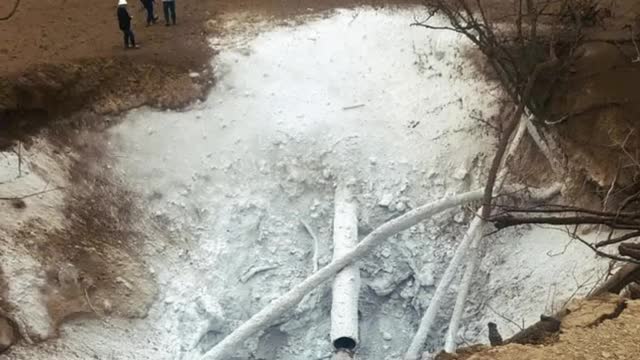Pipeline explosion in Mississippi raises alarm over safety risks
October 09, 2024 | Robert F. Kennedy Jr., Presidential Candidates 2024
This article was created by AI summarizing key points discussed. AI makes mistakes, so for full details and context, please refer to the video of the full meeting. Please report any errors so we can fix them. Report an error »

A recent pipeline rupture in Satasha, Mississippi, has raised serious concerns about the safety of carbon dioxide transportation and the preparedness of local emergency services. The incident, which occurred due to a land shift exacerbated by excessive rainfall, resulted in 45 residents being hospitalized after a highly pressurized form of carbon dioxide escaped from the pipeline. Unlike the carbon dioxide we breathe, this form can be lethal at concentrations as low as 10%, leading to severe health risks including convulsions and coma.
Witness accounts reveal that the rupture occurred approximately nine miles from the emergency shutoff valve, which failed to prevent the gas from leaking for about four hours post-incident. Residents reported immediate health issues, including short-term memory loss and anxiety, with some requiring oxygen support following the explosion.
The company responsible for the pipeline, Denbury Gulf Coast, did not provide local emergency managers with adequate training or information on how to respond to such emergencies. Their computer models, which suggested that a rupture posed no danger to nearby residents, failed to account for critical factors such as weather conditions and the area's topography.
The incident has sparked broader discussions about the safety of the approximately 5,000 miles of CO2 pipelines currently in the U.S., which have seen 62 reported accidents over the past decade. As the industry plans to expand this network by an additional 100,000 miles, concerns are mounting about the potential risks to communities, particularly in regions prone to flooding and erosion.
Critics argue that the expansion of CO2 pipelines is being fueled by substantial tax credits from the Biden administration's Inflation Reduction Act, which they claim disproportionately benefits the methane industry and large agricultural interests. As new pipelines are proposed to run through farms, homes, and schools, questions remain about the safety measures in place to protect residents from future incidents.
Witness accounts reveal that the rupture occurred approximately nine miles from the emergency shutoff valve, which failed to prevent the gas from leaking for about four hours post-incident. Residents reported immediate health issues, including short-term memory loss and anxiety, with some requiring oxygen support following the explosion.
The company responsible for the pipeline, Denbury Gulf Coast, did not provide local emergency managers with adequate training or information on how to respond to such emergencies. Their computer models, which suggested that a rupture posed no danger to nearby residents, failed to account for critical factors such as weather conditions and the area's topography.
The incident has sparked broader discussions about the safety of the approximately 5,000 miles of CO2 pipelines currently in the U.S., which have seen 62 reported accidents over the past decade. As the industry plans to expand this network by an additional 100,000 miles, concerns are mounting about the potential risks to communities, particularly in regions prone to flooding and erosion.
Critics argue that the expansion of CO2 pipelines is being fueled by substantial tax credits from the Biden administration's Inflation Reduction Act, which they claim disproportionately benefits the methane industry and large agricultural interests. As new pipelines are proposed to run through farms, homes, and schools, questions remain about the safety measures in place to protect residents from future incidents.
View full meeting
This article is based on a recent meeting—watch the full video and explore the complete transcript for deeper insights into the discussion.
View full meeting